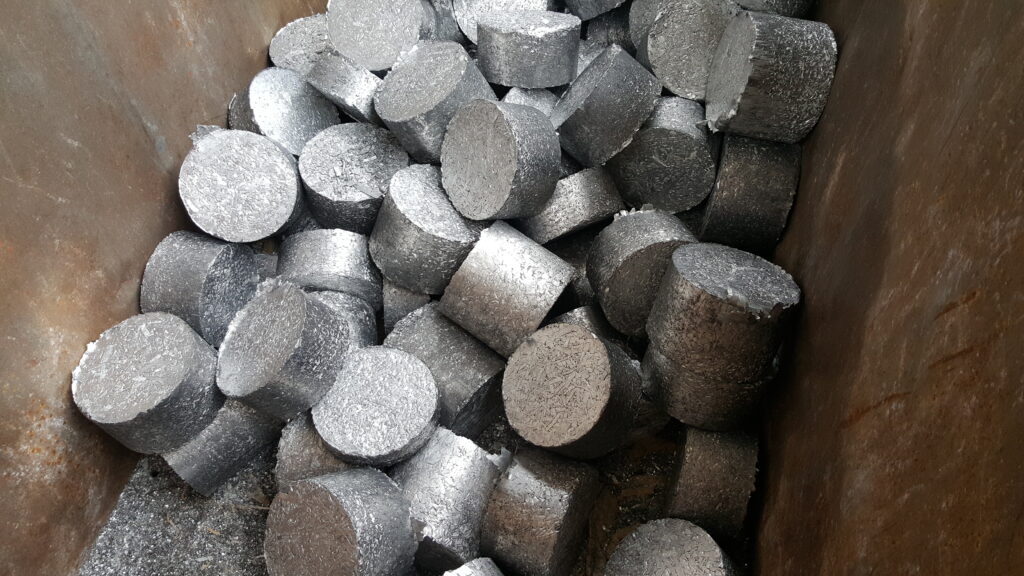Fine-particle and contaminated residual materials, which have a high level of metal content, are often deposited or disposed expensively due to their physical and chemical properties. With the help of conditioning, harmful additions can be separated and the surface to volume ratio can be optimised. This enables the insertion in the melting process and the accompanied recovery of valuable metals, which corresponds the idea of circular economy.
Through the agglomeration with ATM briquetting presses, it is possible to form stable briquettes out of aluminous powder without the use of binders. The briquetting process improves the charging capability at the melting furnace and minimizes the dust exposure during the process. Furthermore, the surface to volume ratio of the charge material is reduced which leads to an increase in metal yield. The briquetting is also suitable for a great number of fine-particle residual materials. This includes swarf out of steel, cast, aluminium, magnesium, brass, copper, bronze and titanium as well as slags, battery waste, tyre wire and mill scale. While briquetting of grinding sludge oils and fluids can also be recovered.
Together with the department of non-ferrous metallurgy of the University of Leoben, ATM Recyclingsystems has been doing research on innovative ways of processing metalliferous residual materials for more than 10 years and has thereby contributed to a reduction of valuable metals which are deprived from the material cycle in the course of deposition.
Arno®Brik briquetting presses are used by customers all over the world to create a sustainable future. More information: https://www.atm-recyclingsystems.com/
Read full article: Processing of fine-particle residual materials with ATM briquetting presses

